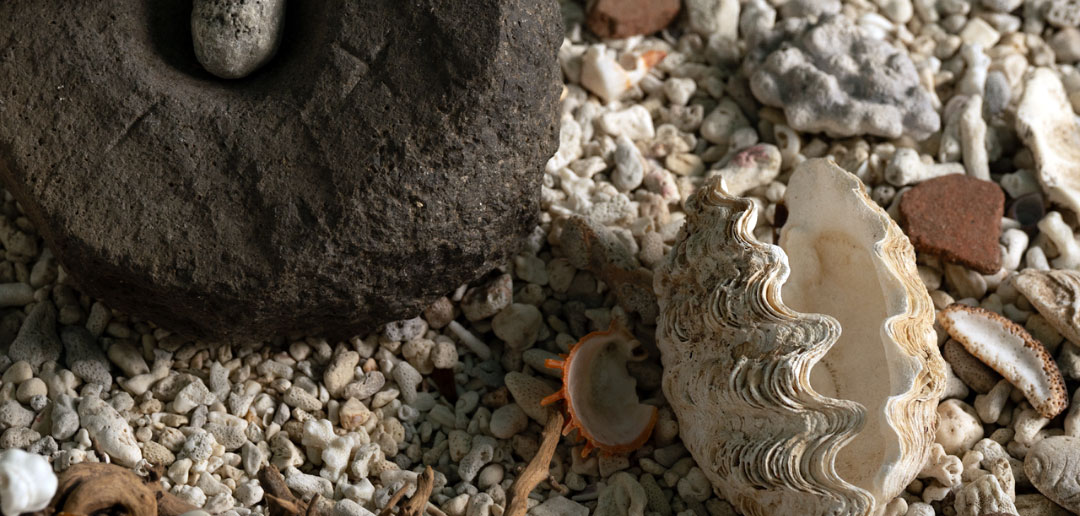Field notes is a new APARRI blog series that features reports and reflections from awardees of APARRI Research and Working Group Grants. In this blog, Research Grant recipient Nathan Samayo and his archival team (Raph Unpingco, Jordan Panuelo and Joseph Certeza) share their experiences documenting the hima collection at the “Johnny ‘Cake’ Siguenza” Museum at Sagan Kotturan CHamoru in Tamuning, Guam.
Archiving Hima at Sagan Kotturan CHamoru’s “Johnny ‘Cake’ Siguenza” Museum
by Nathan Samayo, Raph Unpingco, Jordan Panuelo and Joseph Certeza

On July 25th, 2024, the U.S. National Oceanic and Atmospheric Administration (NOAA) announced that ten species of giant clams in Guåhan (Guam)–known among CHamoru people as “hima”–-will be designated as an endangered and/or threatened species under the Endangered Species Act (ESA). Under this new designation, the harvesting, crafting, transporting, selling and ownership of newly acquired hima may be criminalized by U.S. federal law. Not only does this pose a threat to tool and jewelry master carvers who harvest and carve hima as a cultural practice; it also showcases how conservation policies continue to threaten Indigenous sovereignty and cultural practices without locating the endangerment of hima within the larger implications of capitalist-induced climate change.
Funded by an APARRI research grant, beginning May 2025, a team of archivists consisting of Raph Unpingco (museum curator), Jordan Panuelo (photographer), Joseph Certeza (designer), and Nathan Samayo (archivist assistant) have been working on documenting the existing hima collection at the “Johnny ‘Cake’ Siguenza” Museum at Sagan Kotturan CHamoru (SKC), an Indigenous/CHamoru grassroots cultural center in Tamuning that serves as a hub for CHamoru cultural and knowledge production and praxis. Established as a 501(c)(3) non-profit, SKC sits on 8-9 acres of land granted by the Guam Government in 2006 through a Chamorro Land Trust Commission initiative to designate land to CHamoru people for the production and revitalization of CHamoru culture and economic self-sufficiency. The hima has major historical and cultural significance to CHamorus in Guåhan and the Northern Mariana Islands. An important natural resource in CHamoru culture, hima has been used to create weaponry, tools and body adornment. Beginning in the 1990s, hima began getting carved into a sinahi (“new moon”) and worn as a necklace, becoming a symbol for cultural pride and anti-colonial resistance. While we begin with the hima collection, we hope to archive all collections at the “Johnny ‘Cake’ Siguenza” Museum to resurge CHamoru cultural history, knowledge and praxis.
Nathan Samayo is a PhD Student at Princeton Theological Seminary studying Indigenous religion and politics in the Pacific.


